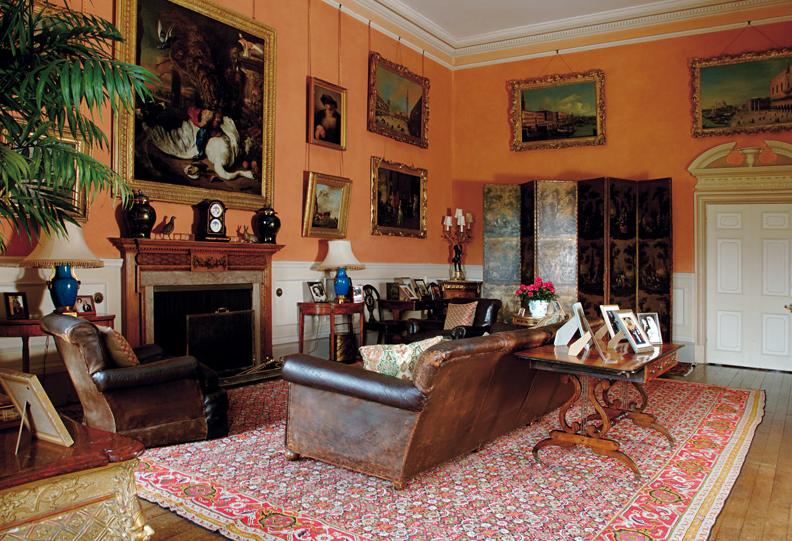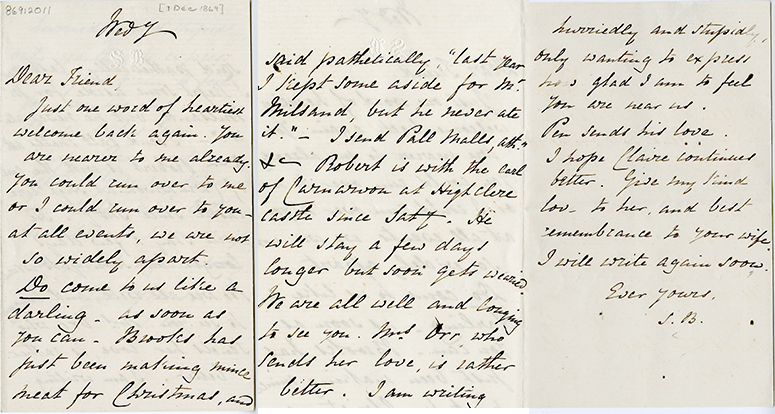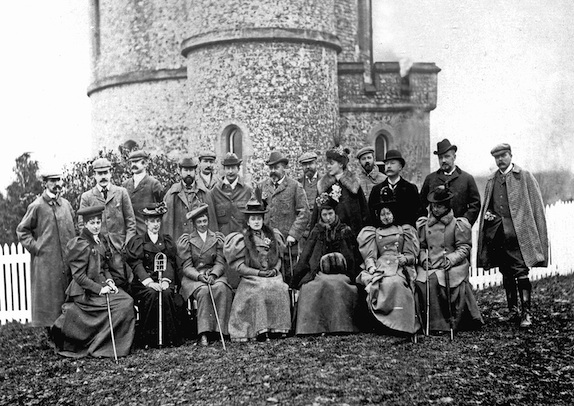Session One blog has been edited to clean up a few of the technicalities in Joe’s talk. Now, almost ready for Session Two!
Linda K. Hughes will kick things off with her paper on “Browning’s Archival Imagination”
Browning’s imagination: entranced by books! The Ring and the Book supplied the key term: the “printed voice” of Victorian poetry. Victorian periodicals figure in Browning’s writings. EBB mentions these regularly, but Browning doesn’t as much. He seemed repugnant to reviews. Puzzled how to publish Ring and the Book. Magazine, no. Not sandwiched between politics and deer stalkings. Yet, he appeared regularly in periodicals. Fewer than Tennyson, but not negligible. This talk will explore Browning’s resort to this medium, what kind of audience and context he envisioned and encountered. Impact on this in his imaginative work.
Clear that Browning saw these as friendship networks in a gift economy. 1834, “Eyes Calm Beside Thee.” Browning signed Z, lasted as long as Fox was editor (-1836). Browning’s network legible in debut sonnet. Eliza Flower received poems of Browning and publishes them. Fox’s editorial hand here as well. Placed sonnet after “Life of Flowers.” Browning never reprinted this one, but others found a permanent place in his works. Once Fox editor, more radical politics, and piece became a literary review. Original poetry by those in Fox’s circle. Demonstrated by others in his circles published by Fox. Thus, Browning continued to send them.
Nov. 1835, The King, lyric celebrates King so wise that python won’t even attack. Fox placed between lead essay on Organic Reforms and Definitions of Classes satire. Created a political context for lyric of Browning. Pippa Passes returned to the King and made it song for assassinating Python on the throne. Jan 1836 poems also appeared in periodical of Fox. May 1836 a piece later inserted.
No more publications until Hoods Magazine in 1844. Poem to Ward. Transcribed the best of what on desk and send in the course of the day. Loves Mr. Hood and does this as a good turn. Ward gave lead position in June 1844 to “the Labratory.” Hood wanted to supply relief in his publication. Lively energy with social passion. Selection of the Laboratory because of grotesque humor. Fittedness to the publication taken into consideration here. Political sensitivity. “Claret and Tokay” appeared in same issue. Reflects same humorous values through characterizations. Lady of the Laboratory a cross-reference to Tokay, in fact. July issue publications as well, suited the magazines orientation. 1845, very anxious to hear how Hood is, Browning added context and audience for signature poem, “Bishop Orders…St. Praxis Church.” Connect to current news cycle. Pet of Browning’s and just a thing for the time. Cambridge Camden society called to disband over alter in church. Oxford movement also in the news. February. Permit convocation on Tract 90. Newman vote. Feb 15, 1845 Examiner report of action against Ward. Newman absent from that meeting. Then, wrote to Ward with a poem. Linked issue in the news with pet poem. In context of letter to Ward and poem, a journalist in the poem, “Bishop Blaugram’s Apology” seems to be a man of the times. One more poem sent to Ward, 1845 of Hood’s magazine, Browning wrote on day Hood died. Decades passed. Only a fragment to Hood. “Dramatic Romances” Serial poem in two parts? Or friendship circle broken and no gift context. Once he finds those again, it shows up again.
1850s, literary journal. March 1854, Barry Cornwall solicited poem on behalf of Margarite Power. EBB poem, My Kate, arrived on time for 1855. Browning, “Ben Karshook’s Wisdom” did not appear in 1854, but in 1856. Mundane life to religious mystery. June 1856, saw the Powers in Paris, both contributed to 1857 keepsake, “May and Death.” Responded to cousin’s death and conceding life to others, noting his own bleeding heart. Power listed him on contributors’ page as Mr. Barrett-Browning. Browning contributed again, August 1, Robert throws into poetry and did the verses yesterday. As Hood’s changed ownership, Keepsake died after 1857. 1864 Section 8 by Drawing Board of James’ Leaves Wife.
Later periodicals, a widower. Transnational adventure. Informed by friendships. American friend Norton soliticted Crayon submission. Cannot oblige, never write for periodicals of any sort. 1861, Atlantic Monthly soliciting unsucessuflly. 1864, changed his mind. Gold Hair appeared in May. Prospus and Under the Cliff in June issue. Browning delayed.
2 decades later. Maintained never submitted a line to the Monthly. Maybe too simple to say a profit motive for the American public. But as Elizabeth’s widower he acted as he did. He published 3 poems as EBB did before her death transatlantically. Poetic appositeness to Browning publishing. So was his selection of Prospice. Suggests late wife in closing lines. Like May and Death in Keepsake. Prospice deeply personal and autobiographical. Under the Cliff became Section 6 of James Lee’s Wife. Another section became Section 8. Gold Hair discordant being from Browning the widower. Contemprorary religious controvery here as well.
Another transatlantic venture in the next decade. Ring and the Book not in magazines intentionally. 1875 deliberately serialized in a newspaper. An Inn Album showed up in New York Times during a rift between Browning and his publishing friends in America. Show in payment and offering lower rate of payment, broke off relations, and then relished that NYT paid double and do without them. Pleasures of profit AND retaliation. But, not a complete explanation. Sunday NYT literary. Pages dedicated to literature and reviews. Inn Album began on the front page. Status as news unto itself. Occupied the entire second page, and then on page 3 led into Thomas Hardy’s contribution. Such a literary context, a more plausible host for his work.
Browning’s serialization of Inn Album, poems hybrid generic status as novel in verse. Sensation fiction is the newspaper novel. Again, Browning shows savvy as a positioner of his writing to the medium. Woman in the poem is tainted and imaginative. Guards secret past from country clergyman, but speaking forthrightly to former suitors. She blurs morality and social status. She made him the standard of all right and fairness. Makes him her hero. She did trust, and touch did follow. Living nature and source of coffins in the trees. Murmurs and silences. Browning’s representation of sexually compromised woman with intellectual prowess is a great contribution to the tradition. Athenaeum praised this poem. But Simmons condemned its vulgarity and repulsed by echoes of Ring and the Book. Even in the US, the Independent reported these attacks, if poem published in NYT nobody noticed. Genre play failed, but NYT as medium was a success.
4 years later in Cornhill Magazine as gift and philathropy: Herbe Riel. Changed mind if royalities went to feed the hungry of the Franco-Prussian War. Changed his mind to publish based on this.
1880s. Sent some, others published without permission. Pell Mell Gazette. Appropriate venue to have his work published on his behalf. Clubland publication. Karlin will speak more about this in the next presentation.
Last one, Edward Fitzgerald in the Atheneum. Resulted from publication of snide remark about the death of his wife. Conceiving of the poem as periodical inclusion was perfect. Allowed him to vent his anger and reach a wider audience. The “new book” has a material referent on the same page with new books.
Victorian press was archive of poetry that embedded economic relations in the culture. Browning wary of this culture, but used it as a trope to print archive thorughout career. Others disdain and use? Browning’s ambivalence is distinct and personal. EBB readily contributed. She like the idea of having the public read her work. But Browning saw it as invited guest. Don’t thrust self on unwilling readers. But did so. Says more of his self-concept as a poet. But revisiting, sheds light on how he imagined it and its sociological logic.
Up Next: Daniel Karlin, “Helen’s Tower”
Tennyson poem, “Helen’s Tower” (1861) {reading). October 1861 authored. In 1847, Blackwood came of age, father died in 1841 (age 15), under guardian of Lady Dufferin. She wrote poems and songs, “the Lament of Irish Immigrant.” Included in Oxford Book of Verse. On son’s 21st birthday, presented a Silver Lamp & poem, “Fiat Lux.” Young man had verses inscribed on golden plate and built a tower to enshrine them. Helen’s Tower is that tower. Tower itself is in trust of Irish Landmark Trust. Substantial architechural folly, if one at all. Began 1848-1861.
Tennyson’s poem is plated on wall of tower (not in gold) and commemorates its dedication. Tennyson’s poems is preoccupied with passage of time, as Dufferin’s poem. Union of mother-son, yes. But also marriage, but son is returned to mother. In death, there is no conjugal relation. Mother’s love in the poem is eternal. But love that must take account of human time. Mortal anxiety. Gift is symbolic for words that cannot be spoken, but requires description in poetic form. Tennyson departs from Dufferin. Eschatological scheme takes in the apocalypse – the end of time. Love endures “in earth’s recurring Paradise.” Tennyson glossed this phrase on manuscripts. Sent three manuscripts to Dufferin. One one, gloss, Earth’s Paradise is renovated earth. Dufferin and Lady on renovated earth? Fate of the Tower itself? “And be found of Angels’ eyes.” The Tower stands the fire of the doomsday fire. Old contrast of mortal stone and lime and that of poetry. From Horace, “Monument more durable than brass.” Shakespeare as well. In Helen’s Tower contrast, the Tower itself speaks, it is the text that survives its passing.
In 1870, 3 years after Dufferin’s death. Rededicate it. Dufferin knew Browning. April 16, 1870. If Browning could be prevailed upon to write, grateful. April 27, sorry cannot rival the verse. Best I could do. Very self-depricating. Boy was Alessandro, a playmate of Pen’s in Florence. London, 1862, kindness referred to, a visit at High Gate. Alessandro 15, but could be seen as boy. On slender foundation, insistence that poem is not flattery. Preemptive defense, I knew the Lady and have not flattered here – not empty court poem. Why?
Contrast between Dufferin and Helen of Troy seems absurd without context. Lost his sense of proportion? Overlaying Homer with the Bible. Direct tribute. You were surpassingly beautiful and all blessed you. Tribute concentrated on Lady Dufferin’s face. He remembers face that launch 1000 ships. Part of his sexual and psychological vocabulary as well. Response to Tennyson’s poem? Dufferin sent the poem to Browning. But, Browning confines himself to Dufferin’s poem. Must have read them, right? Only one of Browning’s poem is the same as that of Tennyson. Only time asked to compete with Tennyson on his own ground, the Laureate poem, occasional verse. Tennyson good at this. Cleverer than Browning. Browning fell into both traps. Dufferin put Browning in a tough position. Browning hated writing to order. He chose sonnet when he did. hated it. Never published these in his volumes of works. Helen’s Tower delivered to Dufferin and then never published. April 26, 1870 written. Given to Mrs. Bronson. Slept in desk for 14 years. Tennyson’s poem published in 1873. Gave to F.J. Furnivall as composition not to print item on Pen’s paintings, print Helen’s Tower. Furnivall was not going to let it language. Sent to Pell Mell Gazzette and it was published in 1883. Much more public paper. Difference in treatment noted.
Furnivall right that there is a confrontation here. Browning dematerializes the Tower and makes it a symbol of Love over Hate. Counters Tennyson’s notion that the Tower will degrade with nature. Earth’s foundations not Paradise. Job 38 over against Tennyson’s vision. Answer’s God’s question: Foundation upon Love. Rebukes Tennyson for an inauthentic pathos. Tennyson’s poem speaks of Tower itself, Browning gives the Tower back to the Lady. No shadow and no change. Browning’s poem, Christianity trimphs over Pagan Romanticism. So, Browning asserts, turn to Homer when think of the Lady. Privileging of Greek Mythic Tragedy is overcome by True Opposite. Yet, rivalry of Helen and the Lady is perverse. Tennyson makes clear relationship of mother and son. Browning doesn’t mention this at all. Good and bad versions of Eros. Sexual passion, Line 7. Implication that aligns ancient and modern Helen. Power then to good or evil ends? Dufferin came to prefer Browning’s version to Tennyson’s.
Lord Dufferin is Viceroy of India at this time. No one has done greater kindness or lasting benefit than the poem you wrote. 1887 Letter. Incredible letter. Trifling service, and exorbitant praise for Browning’s effort. is there a reason for this? Yes, his reading of poem became selective. Lines 5-8 were the core for him. Concentrated on the portait of the canonical son-mother love. Material tower no longer of significance, it is the poem that is of value, not the tower. Wants Browning’s poem last as long as the English language. Already in Sharp’s anthology (1886), Dufferin published his mother’s poetry and Browning’s is published as a frontispiece. No mention of Tennyson, except as a footnote. Browning has usurped Tennyson’s priority. Dufferin (1894) appropriation/reapprioation of poem from Pell Mell. Changes the terms of encounter. If read in 1894, context is given. In Pell Mell, no context. Poet praising a great lady.
Poetically speaking, “Helen’s Tower” is a marginal piece in Browning’s works. Tower still stands, but can now be rented out. Live our your Rapunzel’s fantasies. Brother’s Grimm with mother-son story. Meaning has been hollowed out. Commodified. What of Browning’s poem. Wonderfully interesting and complicated. Lots of associations within frienship network. But lacks dignity. Sluttish time has besmeared it more than Tennyson’s. Eventual status as Dufferin’s court usher not quite undeserved.
Q&A
(1) Did Lord Dufferin marry?
Yes, “the two great injustices of my life”
(2) What did Tennyson say of Browning’s poem?
Dont’ know. In the dating of the poems, Browning’s appeared earlier than Tennyson’s.
(3) Helen, Tower, Public Inscription..Yatesian.
Quote from Yates about a tower read. Read back through the lens of Yates. Influence of poetic chapter on poetry?
Far more that can say here. Tower became associated with troops sailing to the continent in WWI. Replica built as Tietval. Another part of its history. Irish soldiers in fighting, last sight of Ireland was Tower. Think re-erected in their honor without connection to this story. Kipling has poem on the wall in Helen’s Tower, about Dufferin’s wife’s charity work in India.
(4) Take on Lord Dufferin’s Hermeneutics. Skeptical of Dufferin as a reader? Exege Monumentum idea. Shakespearean example: We know nothing about the people about whom he wrote his sonnets. Here we do. Is Dufferin’s embrace indicative he was a better reader than give credit?
He gives a selective reading. If you mentally reconstruct the sonnet from the letter, only 4 lines on the Lady. Trajectory 1870-1877 of reading, fixates on this passage. Seems to be the whole poem for him. The rest of sonnet setting for this jewel. Doesn’t despise the reading of it, though.
(5) Charting of way poems published in periodicals. Hood’s Magazine, for instance. Other cultural/historical elements come through (Oxford Movement, etc), Browning must have been attentive to his surroundings. Does reading of poems shift understanding of Browning’s mind/position?
None of this bilibographic information is new. One can go through the periodicals and it is there. Never been compiled. Insistent resistance to magazines as “popular” and so not worth literature. There, but not pay attention to it. Not wanted to see poetry in that context. Other motive, textual condition of 19th century literature – materiality of print culture impact meaning? Yes! The way poetry made and understood, in part by the poet…read far more broadly than we often think. Doesn’t change view of Browining. Many use and disavow. Why so diffident, though? If you read me, read my book. Or more open later? Why such a problem to appear in a periodical?
(6) Both talks return to the anxieties of authorship. Frequency he published under his own name. Begins “Z” but uses name after that. Amazed by Inn Album – so much print space! Declaration of “here I am.”
Interesting that signing his name came after printing a volume in his name. Indeed may play into Linda’s thesis on debut.
(7) In 30s, 40s and 50s, poems in periodicals come after major volumes. Doesn’t seem to use to promote his volumes, but does so in the American press!
Like Mittlemarch, Harper’s Weekly appeared in little bits. He has a skit on American publishers – 1880s, really against them. Editorically speaking, dramatis personae poems. Browning denied making the choice. Must have made the choice! Browning must have chosen the poems he gave to be published, but publically denied.
(8) On sonnet road between Shakespeare and Browning is Shelley. Periodically?
Yes, published in the Liberal. Maybe this comes into the sand. Stone reverting to sand. Also, broken roof and tower in Agamemnon.
Again, anytime Browning writes about a Tower, there are other associations.





